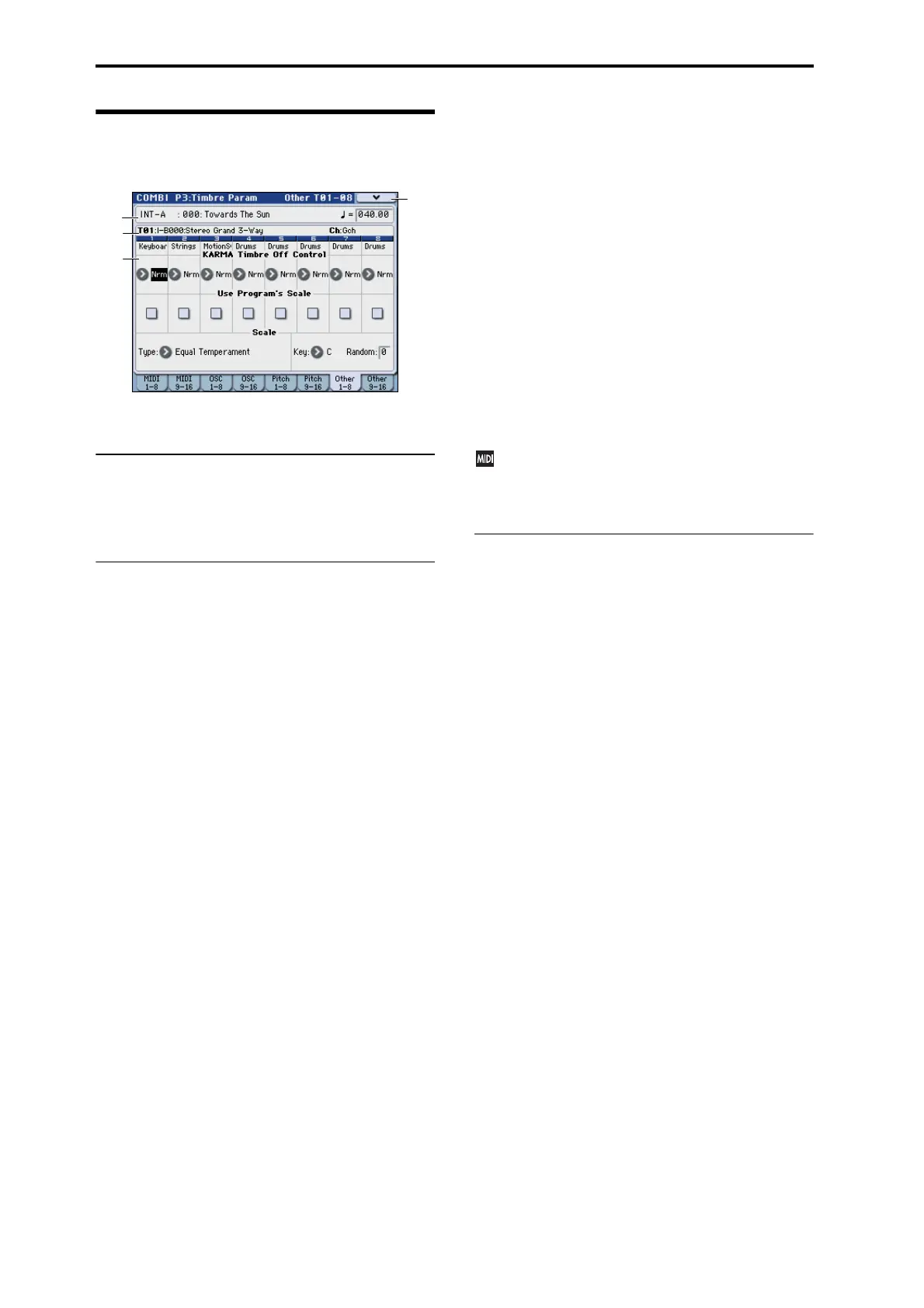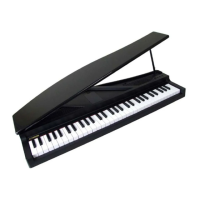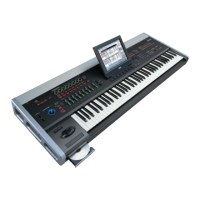Combination mode
152
3–7: Other T01–08,
3–8: Other T09–16
Here you can make settings for the KARMA and scale of
timbres 1–8 and 9–16.
3–7(8)a: Combination Name, Tempo
3–7(8)b:Timbre Info
For more information, please see “2–1: EQ Trim T01–08, 2–2:
EQ Trim T09–16” on page 147.
3–7(8)c: KARMA/Scale
Timbre 01 (Timbre Number):
KARMA Timbre Off Control
[Normal, Timbre Off by KARMA Off, Timbre Off by
KARMA On]
Nrm (Normal): The KARMA ON/OFF switch will not
control whether a timbre will sound. Normally you will
select Normal.
by Off (Timbre Off by KARMA Off): The timbre will
sound as usual when the KARMA ON/OFF switch is on.
The timbre will not sound when the KARMA ON/OFF
switch is off.
Use this when you want a specific timbre of multiple
timbres set to the same MIDI channel to be silent only when
KARMA is off.
by On (Timbre Off by KARMA On): The timbre will not
sound when the KARMA ON/OFF switch is on. The timbre
will sound as usual when the KARMA ON/OFF switch is
off.
Use this when you are using a KARMA Module to control
multiple timbres that are set to the same MIDI channel, and
want a specific timbre to be silent only when the KARMA
function is on.
For example you can use this to play a two-timbre layer
from the keyboard when KARMA is off, and use one timbre
to sound the phrase when KARMA is on.
If the Status (Combi 3–1(2)c) of each timbre is INT, you can
use the Timbre Off Control setting to stop the oscillator of
each timbre from sounding.
Use Program’s Scale [Off, On]
Timbre can use the scale that is specified by Scale (Prog 1–
2b).
On (checked): The scale specified by the program will be
used.
Off (unchecked): The scale specified by Type (Combi’s
Scale) (Combi 3–7(8)c) will be used.
Timbre 02...08, 09...16 (Timbre Number):
Here you can make settings for the KARMA function of
each timbre 2–8 and 9–16. The settings are the same as for
timbre 1. For more information, please see “Timbre 01
(Timbre Number):,” above.
Scale:
This specifies the scale that the combination will use. For
more information, please see “1–2b: Scale” on page 27.
Type (Combi’s Scale)
[Equal Temperament...User Octave Scale15]
Selects the scale.
Key [C…B]
Selects the tonic key of the selected scale.
Random [0…7]
As this value is increased, an increasingly random deviation
will be added to the pitch at each note-on.
If Status (Combi 3–1(2)c) is INT, this setting will affect
the pitch produced by the M3. If Status is EXT, this
setting will affect the note number of the note messages
transmitted via MIDI.
▼3–7(8): Menu Command
• 0: Write Combination ☞p.185
• 1: Panel–SW Solo Mode On ☞p.106
• 2: Exclusive Solo ☞p.107
• 3: Copy from Program ☞p.185
For more information, please see “Combination: Menu
Command” on page 185.
3–7a
3–7b
3–7c
3–7
Menu

